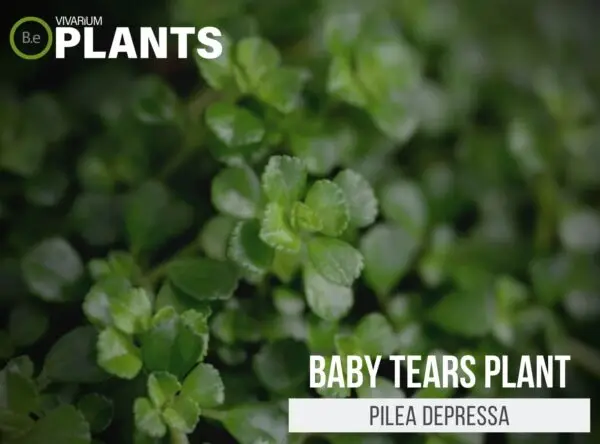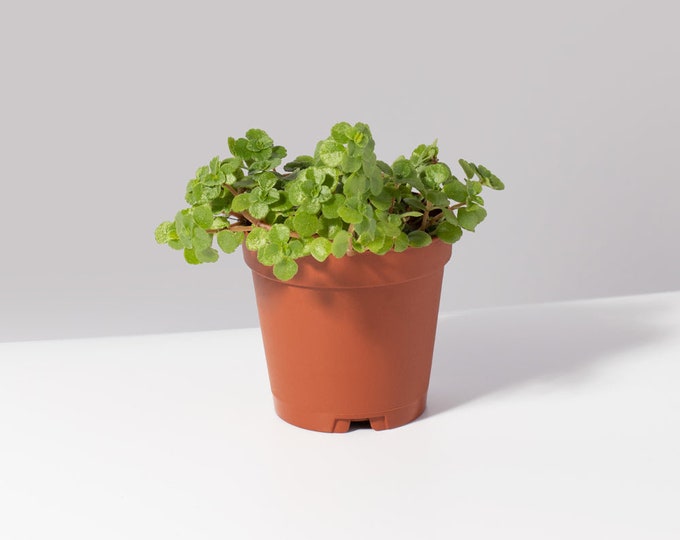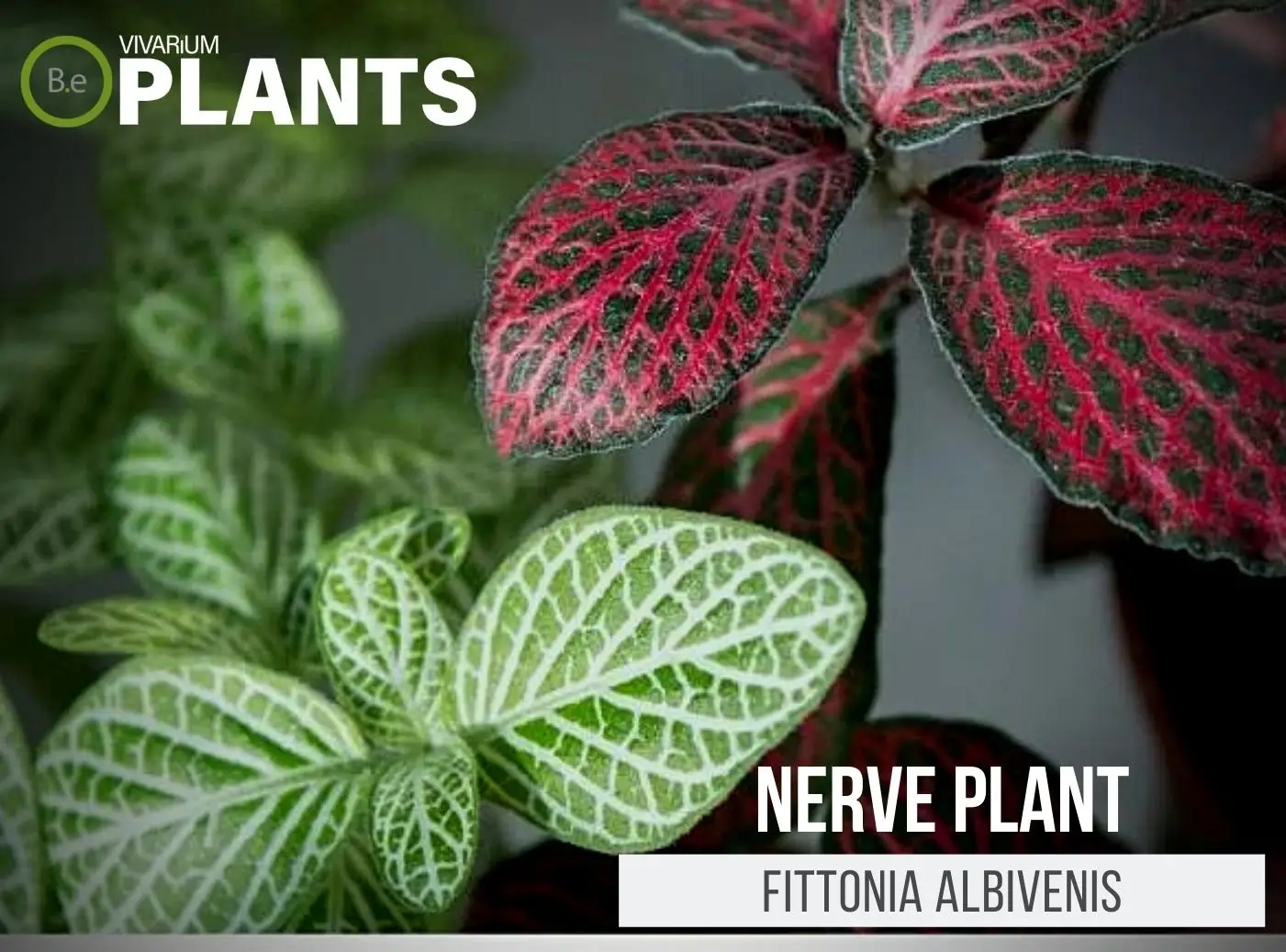Pilea depressa, also known as depressed clearweed, is an excellent tropical plant for owners with animals or without.
This plant belongs to the Urticaceae family, and it thrives as a ground cover in an enclosure, adding vibrancy and texture.
For novice keepers with a love for greenery, Pilea depressa is practically indestructible and requires very little maintenance to survive in an enclosure.
Quick Stats:
Scientific Name: Pilea depressa
Family: Urticaceae
Common Names: Depressed Clearweed, False Nettle, Baby Tears Plant
Habitat: Moist, wooded areas
Height: 2 to 3 inches
pH Range: 6.0 to 7.5
Temperature: 70°F to 85°F
Lighting: Bright
What is Pilea depressa?
Pilea depressa, also known as the Baby Tears Plant, is a trailing plant with petite heart-shaped leaves growing no taller than 3 inches.
Its stem is an intricate chartreuse, while its leaves are a vibrant green.
This stunningly beautiful species of the Urticaceae family can grow incredibly quickly in a tropical terrarium setup, creating a lush forest floor.


Pilea depressa Facts
These ground-cover plants are easy to propagate, with simple stems that can be cut into four-inch pieces, attached to damp soil and lightly covered with a small layer of moss.
They do not have any significant unique features other than their vibrant colors, but the lush greenery that Depressed Clearweed provides to any enclosure is remarkable.
Description
Pilea depressa is a low-growing plant that can reach a maximum height of 3 inches.
It has small, heart-shaped leaves that are a vibrant green color. The stems of the plant are light green with a chartreuse hue.
Habitat
Depressed Clearweed is native to moist and wooded areas of southeastern North America.
The average temperature in its native habitat is 70-85°F.
pH Preference
Pilea depressa prefers environments with a pH of 6.0-7.5.
This type of soil is usually fairly moist and usually contains leaf mold and/or peat moss for drainage.
Vivarium Type
The Pilea depressa is quite an easy-going species. With that in mind, it will not be too complicated when it comes to choosing the type of enclosure it is grown in. It is best to try and replicate the plant’s natural habitat as much as possible.
Doing so will make it easier to provide this foliage plant with its basic needs. The proper setup and theme of the enclosure will make a big difference to the overall look and health of the plant.
Be sure to choose setups that are moist and high in humidity. Here are recommended vivariums it will do well in:
-
- Paludariums – Half aquatic/ half terrain-based enclosure.
-
- Terrariums – Fully terrain-based enclosures with little to no aquatic features.
Vivarium Placement
Pilea depressa can be placed in either the foreground or midground of a vivarium.
It is a terrestrial plant, and should not be placed partially submerged or fully underwater.
Pilea depressa prefers moist, well-drained soil with plenty of airflows.
Substrate
Pilea depressa does best with a peat-based terrarium substrate. Coco coir is also an appropriate surface material for this plant, as it has excellent drainage and air-holding capabilities.
Lighting
Pilea depressa requires bright indirect sunlight or bright terrarium lighting, but not direct sunlight. UV lighting is not necessary for the health of the plant but can be beneficial for its growth rate.
Buy Pilea depressa
When it comes to buying a Baby Tears Plant, there are a few things to keep in mind. Making sure the plant is healthy when purchased is essential for its success in a vivarium. Vegetation that is already in poor conditions will have a very hard time adjusting to new environments.
Click the image below to find out more about the current price and other relative info about this plant.
Pilea depressa Care & Propagation
Pilea depressa is easy to propagate by planting cuttings in moist soil and lightly covering them with a layer of moss.
To care for this plant, it’s important to keep it moist but not soggy. The soil should be allowed to dry out between waterings.
How To Grow
Pilea depressa is fairly easy to grow. To propagate, simply cut 4″ pieces of the stem and attach them to a moist substrate.
They do not need to be buried in the soil, a light covering of moss will be sufficient. It is important to provide adequate airflow for Pilea depressa.
Watering
It’s important to keep Pilea depressa moist but not soggy. Allow the soil to dry out slightly between waterings.
During the summer months, it’s important to keep the plant moist but not soaked. Pilea depressa can also tolerate occasional flooding and wet soils.
Plants Similar to Pilea depressa
Adding diversity to an enclosure is key to an aesthetically pleasing setup. Try mixing up the look of your vivarium with different flora that can easily co-exist in the same types of environment.
Furthermore, if for some reason you find the Baby Tears plant hard to acquire or would like to consider something similar to this plant… Here are other tropical plants you might see will do well with or in place of Pilea depressa:
Conclusion
Pilea depressa is a great low-maintenance plant to incorporate into any vivarium. Its vibrant green leaves and low maintenance make it perfect for novice vivarium keepers.
Because of its low-maintenance requirements, it’s also great for busy owners who don’t have a lot of time to dedicate to care for their enclosure.
Frequently Asked Questions
No, Pilea depressa is not a fast–growing plant. It has a slow to medium growth rate and should be pruned to encourage bushiness.
No, Pilea depressa is not a succulent plant. It belongs to the Urticaceae family and is a perennial herb. It has thick, succulent leaves, but it is not a true succulent plant.
Yes, Pilea depressa is easy to care for. It is relatively low–maintenance and only requires medium light, moist soil, and occasional pruning.
No, Pilea depressa is not toxic.
Yes, the baby tears plant (Pilea depressa) does spread by putting out runners and new plants.
Yes, you should mist a Baby Tears Plant (Pilea Depressa) to keep the soil moist. Humidity is important for this plant, so frequent misting helps prevent wilting.
To make your baby tears (Pilea Depressa) bushier, pinch off the stems at the top of the plant and prune back the top layer of foliage. This will encourage new buds to form and create a fuller, bushier appearance. Additionally, you can move the plant to a spot with more indirect light, as this will also help promote new growth.
An overwatered Pilea depressa may have droopy leaves, yellowing of the leaves, wilting, and brown patches on the leaves.
Signs That Your Pilea depressa Is Getting Too Much Light:
1. Leaves Have Changed Color
2. Wilting and Burning
3. Tips and Edges of Leaves Have Started Turning Brown
4. Plant Stops Growing New Leaves
5. Sight Damage on the Plant Leaves




